Londinium is the name given to the settlement that was established by Roman legions on the northern banks of the river Thames in AD 47. Today, the same area is occupied by the City of London – the financial heart of the modern metropolis.
London is an ever-evolving metropolis. Continuously occupied for close to 2000 years, the city is one of Europe’s oldest capitals, and it has been shaped and reshaped to fit the changing needs of its inhabitants. Once confined to a footprint of one square mile, it now covers an area six hundred times larger, and is home to almost nine million people.
Londoners always seem to be busy. People rush along the footpath – some focused on their destination, overtaking slower walkers with ease. Others multitasking, with a coffee in one hand and a phone in the other, replying to emails while running for a bus. Would they tread more carefully if they realised they were atop a vast labyrinth? A maze of tunnels and chambers, rivers and streams, pipes and cables of all sizes and age, which weave their way through the soils to form a densely-packed and unseen world.
Most Londoners instinctively understand that London doesn’t stop at street level – after all, each day millions of them take stairs, escalators and elevators down to Tube platforms buried tens of metres below the surface. But few realise that as they descend, they’re also passing through antiquity. From the tooth of a rhino that roamed the region 60,000 years ago, to the remains of a Roman temple, subterranean London is a living history book; its story written over millennia, page by complex page. And the further down we go, the more ancient the tale.
Clay
Let’s start with its geology. The city sits on a basin formed 65 million years ago, featuring a bedrock of chalk, overlaid with layers of clay, sands, and gravels. The relative thickness and depth of each layer varies across the city, forming a complex surface geology that speaks of the region’s glacial and alluvial pasts. London Clay is arguably its most important geological layer – too soft and prone to shrinkage to support record-breaking skyscrapers above ground, it’s the perfect material to tunnel through, and as such, has played a key role in the city’s development. Its presence allowed pioneering Victorian engineers to make their first foray into the underworld, and it remains the layer of choice for many of London’s construction projects. The Tube, London Power Tunnels, several road tunnels, and Crossrail, which is the latest addition to the city’s underground rail network, can all be found piercing their way through it.
Advances in tunnelling technology have also allowed us to go much deeper and so avoid the busy clay. The Thames Water Ring Main – a key component in the city’s water supply infrastructure – typically sits at depths of 40 m, but some sections plunge to 60 m, meeting the challenging Thanet Sands that sit beneath the clay. At 70 m below the surface, the Lee Tunnel, drilled through porous chalk by a Herrenknecht mixshield in 2012-14, remains the deepest place in the city.
Despite being firmly out of sight, the impact of each of these structures is keenly felt above ground. London’s underground networks have been compared to the nerves of the human body. Every signal and material that passes through them helps to sustain the city and its people. Light zipping down fibre optic cables, electricity through bundles of wires, water and waste through channels of concrete, brick, iron and plastic, and the trains and cars that move us around. All of these make London what it is. But to understand what the city once was, we need to look between the tunnels. It’s time to call in the archaeologists.
River
London’s history can’t be found in a single, uniform layer. Centuries of construction and destruction, and ever-changing land use, have squeezed and compressed parts of the city to different extents. Out toward the edges of the modern metropolis, archaeology is relatively shallow – less than three metres below the surface. But right in the heart of the city, where the earliest Roman settlement Londinium once stood, you’d need to dig down twelve metres to discover any material evidence of the ancient residents. Much of this is due to the locations of London’s ‘lost’ rivers.
“London, before we built over it, was a pretty watery place. The Thames actually has lots of tributary rivers, though we largely don’t see them,” explains Sophie Jackson, Director of Developer Services at Museum of London Archaeology (MOLA). “A stream called the Walbrook flowed through Londinium. As the city grew, its riverbanks were reinforced, and the land on either side raised up. This would be repeated each time there was a flood. Buildings were demolished in place and squashed down, so that something else could be built on top.” Through this cycle, London has grown vertically, hiding its history beneath and within newer structures, to meet the city’s demands. The rivers, once flowing at surface level, became buried and formed London’s first wastewater system. Though if you know where to look, you’ll still find some clues. Fleet Street, famed for its role in the newspaper industry, was named after a lost river. Effra Road in the southern borough of Lambeth, follows the route of another. Not all are so out of reach. The Westbourne still flows through a large iron conduit that crosses high over the tube lines at Sloane Square station.
In building his sewer system – the largest engineering project of its day – Victorian engineer, Joseph Bazalgette intercepted these rivers, creating a vast network of brick tunnels to capture and divert London’s waste. This piece of infrastructure transformed the city in the 1800s, and is still vital today. But with London’s population growing far beyond anything Bazalgette could have predicted, his sewers are no longer sufficient. On average, 62 million cubic metres of sewage are still discharged into the Thames each year. So in 2016, construction started on a new deep-level tunnel called the Thames Tideway. When completed, this super sewer will stop the most polluting overflows from reaching the river, cleaning up London’s waterways for future generations.
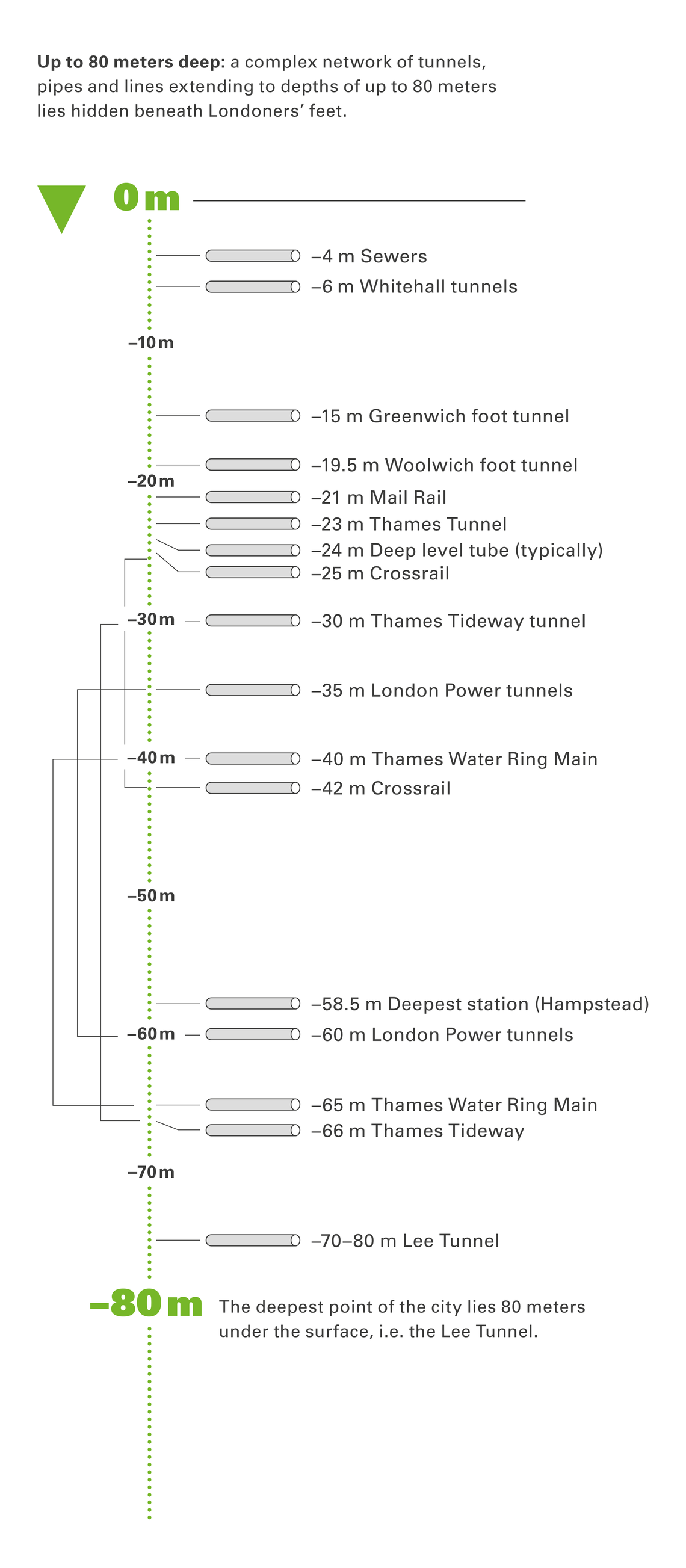
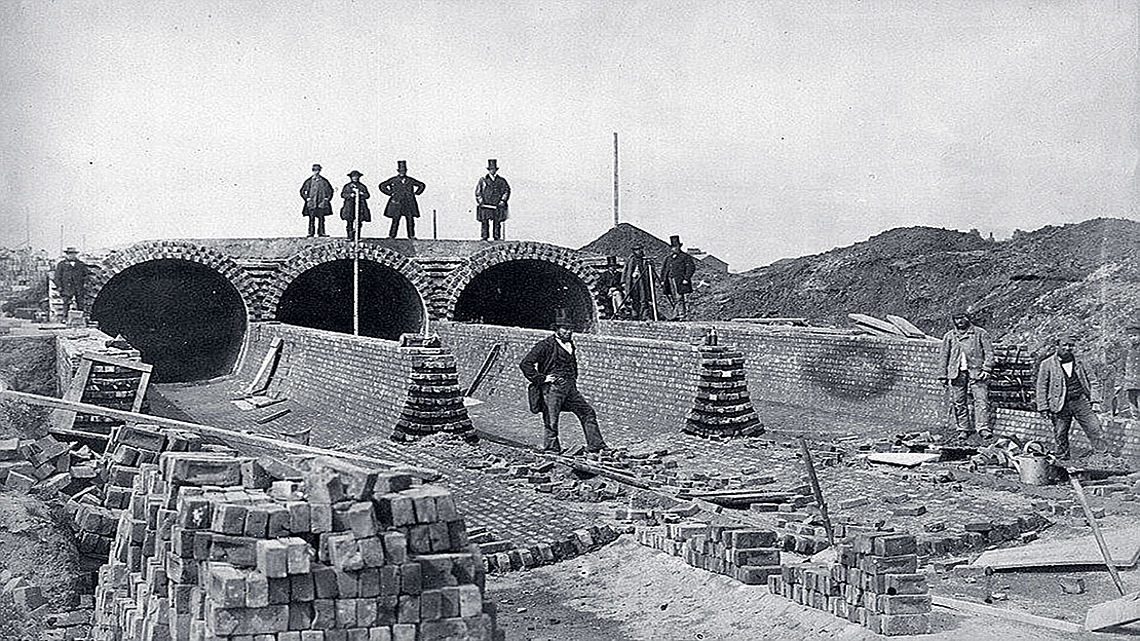
Joseph Bazalgette’s sewage system transformed London, by diverting the city’s waste away from the central stretch of the River Thames.
62 million m3
of (untreated) wastewater are still directed into the Thames every year. This is equivalent to the volume of around 24,800 Olympic swimming pools.
Tideway
So in 2016, construction started on a new deep-level tunnel called the Thames Tideway. When completed, this super sewer will stop the most polluting overflows from reaching the river, cleaning up London’s waterways for future generations.
For the majority of its route, the Tideway tunnel follows the course of the Thames, starting at Acton in the West, before meeting the Lee Tunnel at Abbey Mills in east London. Three Herrenknecht tunnel boring machines (TBMs) have been used on the project – Rachel and Selina on the main tunnel, and Annie on a connector tunnel from the pumping station at Greenwich. “It is the biggest infrastructure project ever undertaken by the UK water industry,” says Senior Community Relations Manager at Tideway East, Martin Griffiths. “And of all the projects I’ve worked on, it’s the one I feel most passionate about. It will not only give us a healthier river, but it’s an engineering marvel too.” Griffiths, who is employed by the main works contractor Costain, Vinci Construction Grands Projets and Bachy Soletanche, is not exaggerating. With more than a dozen vertical shafts constructed over its 25 km route, some of which reach 66 m into the chalk, the scale of the project is significant.
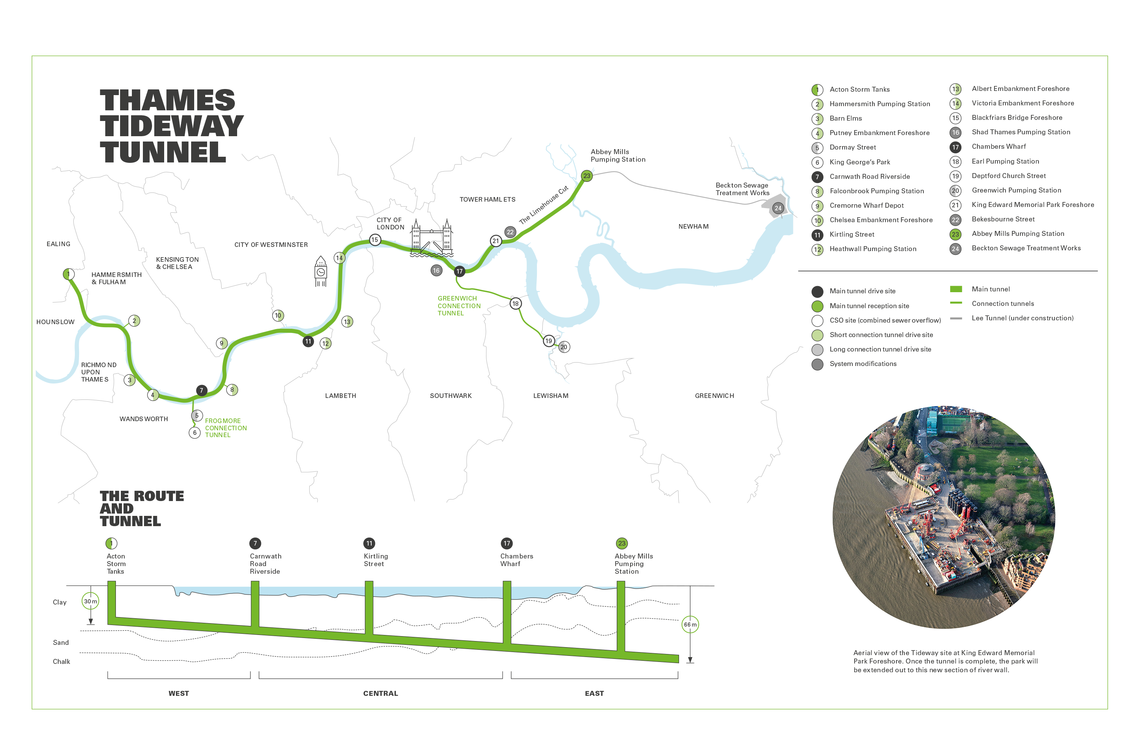
A unique opportunity for archaeologists
In addition to providing access for TBMs, these shafts act as portals through time, revealing a hidden snapshot of London, as each layer of dirt is carefully removed. At one site, close to the iconic Battersea Power Station, archaeologists had a unique opportunity – they could excavate a prehistoric course of the Thames. “The Kirtling Street shaft has been interesting,” says Jackson. “We’ve got some wonderful sections through the course of the river, and they’ve allowed us to see historic changes in the climate, and identify storm events. We’ve also got some really deep archaeology too, so it’s exciting.” Elsewhere on the Tideway project, MOLA archaeologists have uncovered everything from a Tudor keyring to ornately-carved medieval pillars. Perhaps the most evocative find was the skeleton of a man lying face-down in the mud, still wearing thigh-high leather boots. “That find captured a moment in time,” says Jackson. “Something happened to this young man – it seems very unlikely that he was deliberately buried. And here we are, 600 years later, trying to tell his story.”
„It is the biggest infrastructure project ever undertaken by the UK water industry.“
Martin Griffiths, Senior Community Relations Manager at Tideway East.
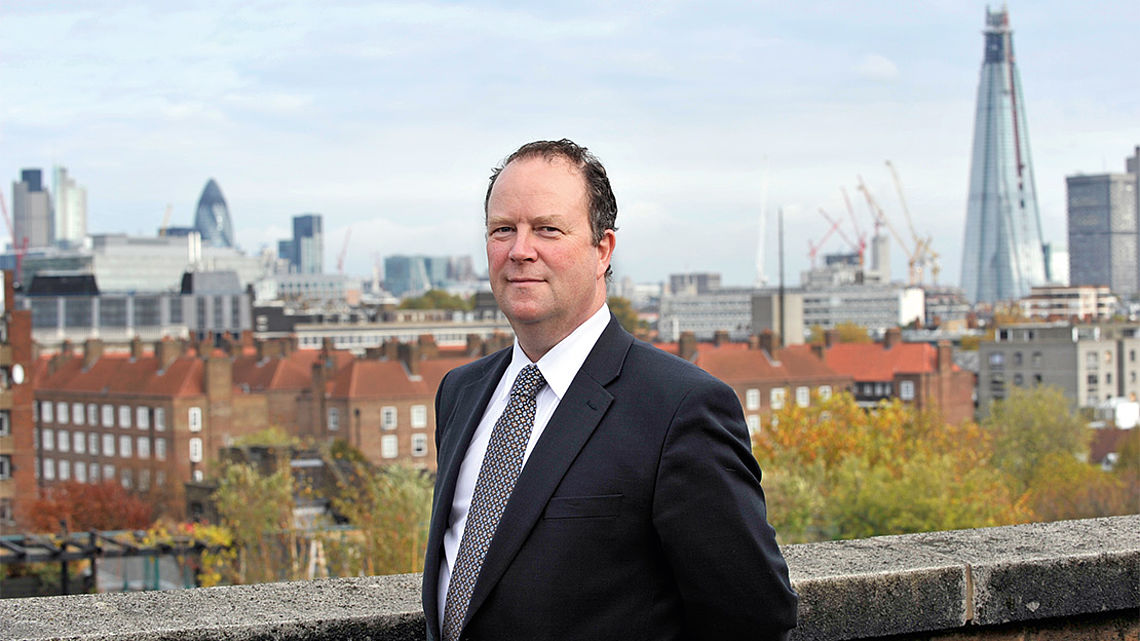
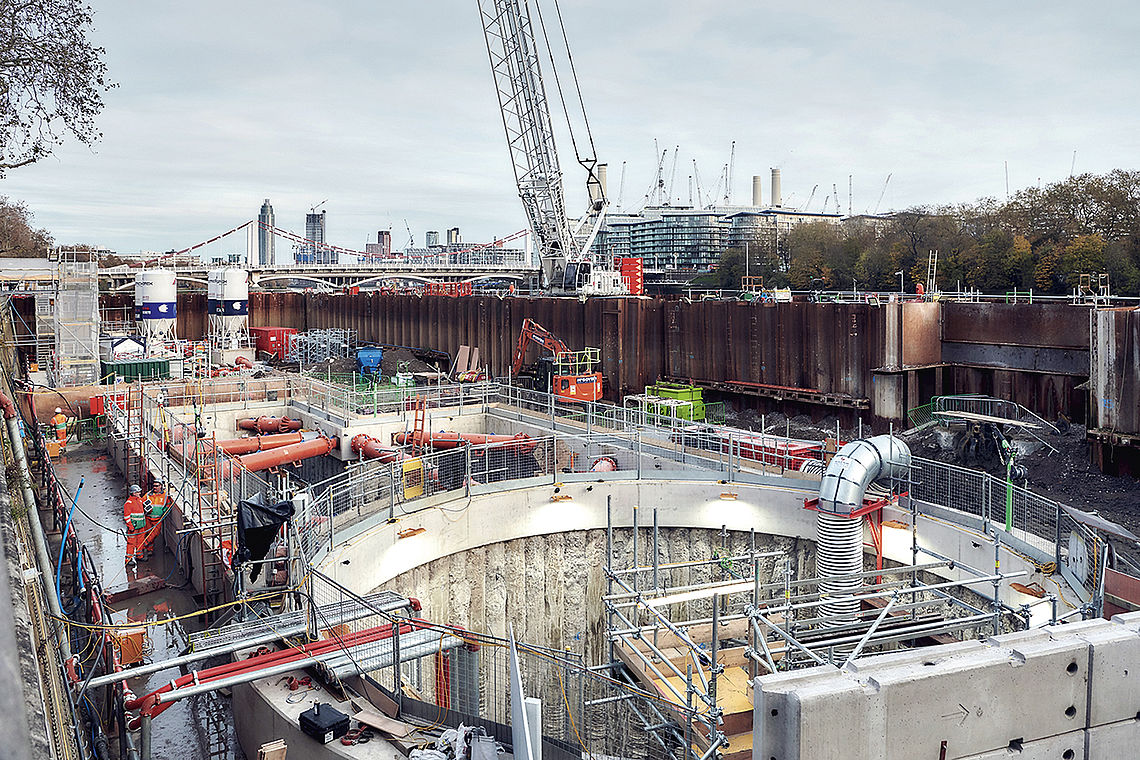
In Chelsea, old wastewater overflows are redirected into London’s new super-sewer. At the Chelsea Embankment site, a new area of public space by the river will be created for public use.
Dig
These days, it’s very typical for archaeologists to work alongside engineers in tunnelling and construction projects, especially those in busy urban landscapes. Tideway is the latest example in London, but there are many others. In 2018, a team of over 200 archaeologists began exhuming thousands of bodies from a cemetery close to Euston station – the planned terminus for a new rail line. Dubbed High Speed 2 (HS2), it will link London to cities in the North of England.
Knowing that their route would pass through a number of historically significant areas, the team behind Crossrail incorporated archaeology from the outset, and reaped some remarkable rewards. Construction of the twin-bore rail tunnels, drilled by eight Herrenknecht TBMs, included 40 excavation sites. The tens of thousands of artefacts that were uncovered span 55 million years of London’s history and pre-history. So while engineers were future-proofing London transport, archaeologists were discovering the city’s past.
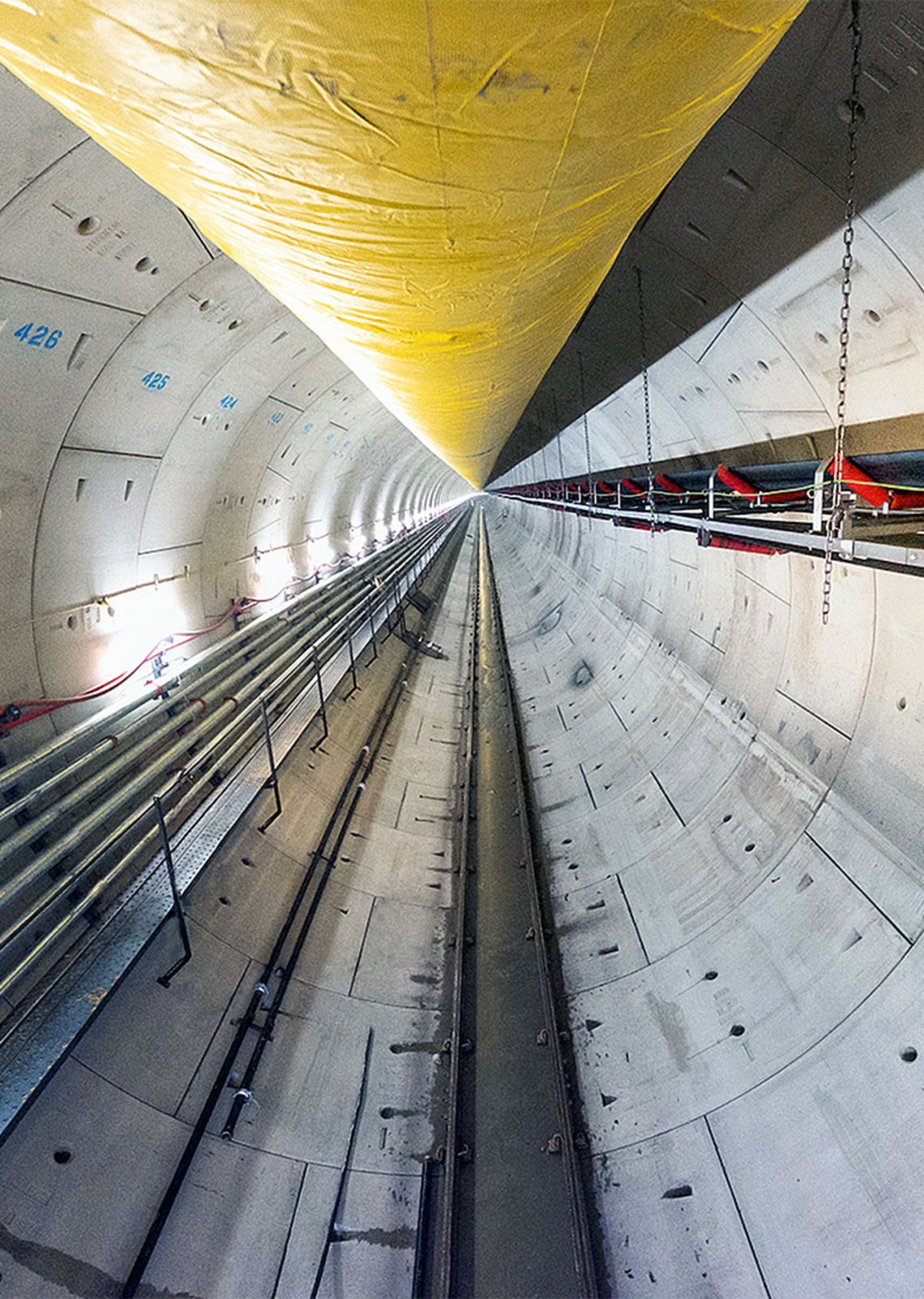
The Tideway Tunnels are 7.2 meters in diameter and will ensure that several tens of millions of tonnes of wastewater no longer enter the river.
But as Jackson explains, the close link between the two professions is relatively recent, “Before the Second World War, urban archaeology was more of an antiquarian activity, led by keen volunteers or wealthy collectors. The systematic approach to excavation started in the shadows of widespread bombing damage after the war, especially in the areas where Roman ruins were revealed. But it wasn’t until the early 1990s that archaeology became a formal part of the planning process in the UK.” Since then, some of the biggest engineering projects have also resulted in the most important archaeological finds.
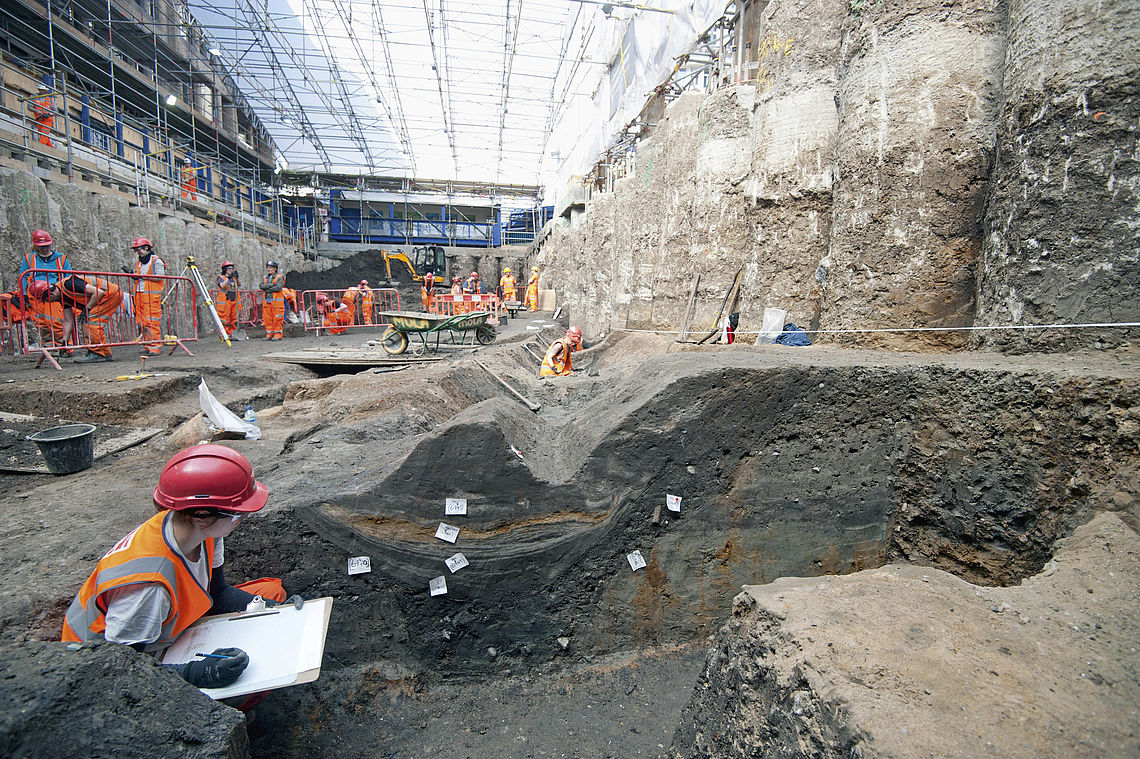
Tunnelling projects like Crossrail, HS2 and the Thames Tideway have given archaeologists a unique glimpse at the long and varied history of London.
Arguably, the most significant of recent years was also the tiniest – a bacterium. Archaeologists working on Crossrail in 2013 excavated 25 skeletons from a construction shaft close to Farrington station. When tooth samples were tested for the presence of ancient DNA, they found Yersinia pestis, a pathogen known to have caused Europe’s first major plague; the Black Death of 1348. Interestingly, much younger skeletons were also found to have fallen victim to the disease, suggesting the Medieval Londoners battled it for at least a century. A separate excavation at Crossrail’s Liverpool Street station uncovered a mass grave, long suspected to contain victims of the Great Plague of 1665. Traces of Yersinia pestis was found in all 20 of the individuals tested, confirming that this same pathogen played a role in the 17th century plague. This was the first time that these threads through time could be tied together, enriching our existing knowledge on the history of disease.
„The most important archaeological finds have often been made in the wake of the largest construction projects“
Sophie Jackson, Head of the Department of Developer Services at the Museum of London Archaeology (MOLA).
Archaeological finds do more than add to the academic literature. For those working with communities impacted by large-scale construction projects, they’re an important means of engagement. “People love to hear about what’s been discovered in their neighbourhood, whether it’s a cannon ball from the Tower of London or a leather boot,” says Griffiths. “On Tideway, we have had community sessions with MOLA archaeologists, who are always peppered with questions. These finds are a real, tangible link to the past, just as much as the tunnel connects people to the future of London.” Whether it’s a super-sewer or an intercity rail link, infrastructure programs tend to be engineering led, and aimed squarely at improving tomorrow. But in an intensely occupied place like London, they have a secondary effect. By partnering with archaeologists who are expert at peeling back the layers of history, these projects help us to better understand our past, and forge to connections to long-forgotten people from lifetimes ago. That’s a thought worth considering the next time travelling through a tunnel.
55 million
years of London history can be gleaned from tens of thousands of artefacts revealed by the Crossrail Project.
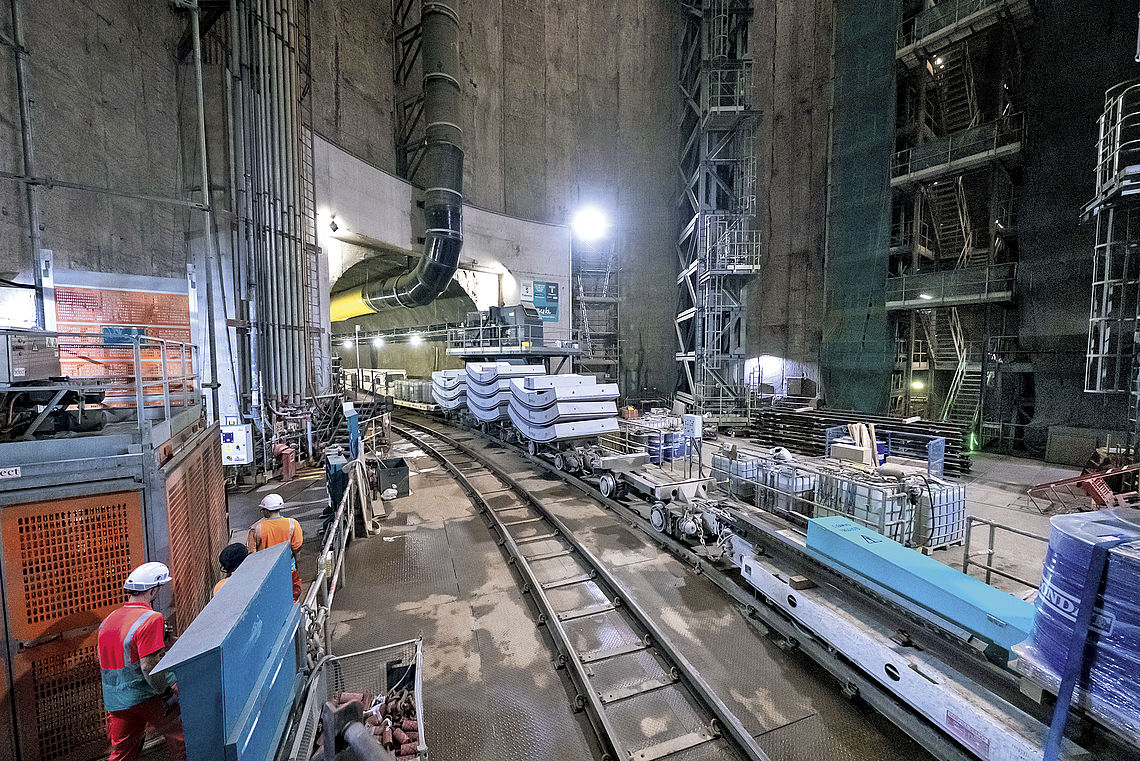
The Kirtling Street shaft has a diameter the same size as the dome of St Paul’s Cathedral.
THE AUTHOR,
LAURIE WINKLESS
Laurie Winkless is an Irish physicist and author. After her degree and postgrad, she joined the UK’s National Physical Laboratory as a research scientist, specialising in functional materials. Now based in New Zealand, Laurie has been communicating science to the public for 15 years. She has worked with scientific institutes, engineering companies, universities, and astronauts, amongst others. Her writing has featured in outlets including Forbes and Wired, and she has written two books, Science and the City (Oct 2016) and Sticky (Nov 2021), both published worldwide by Bloomsbury.
